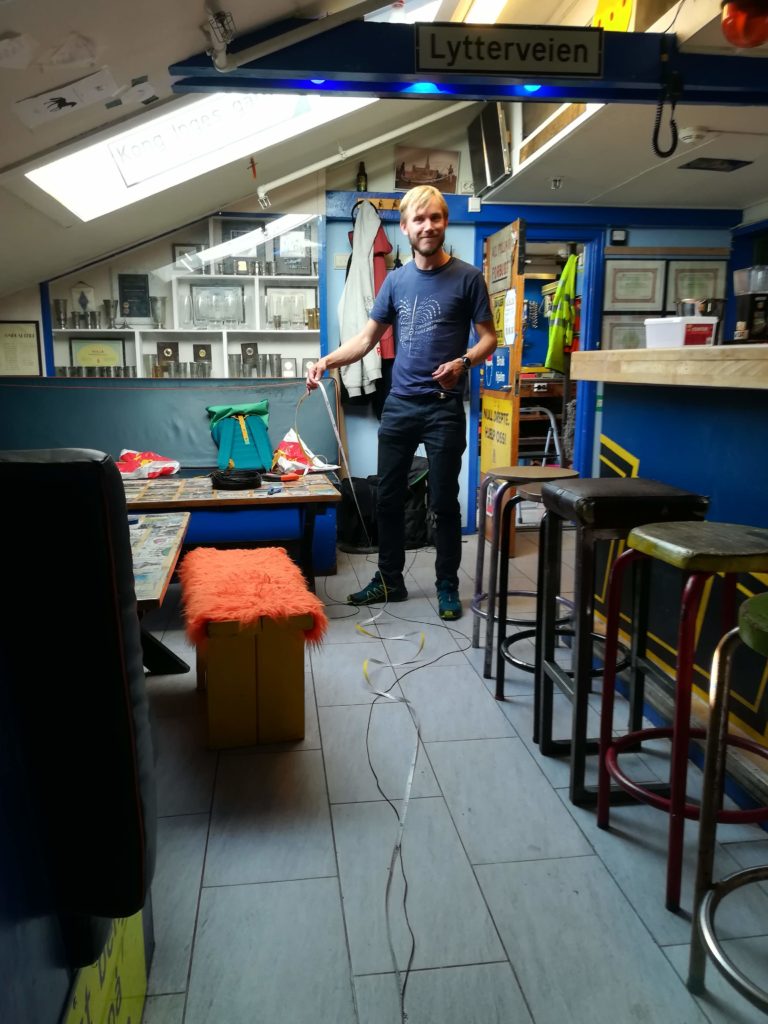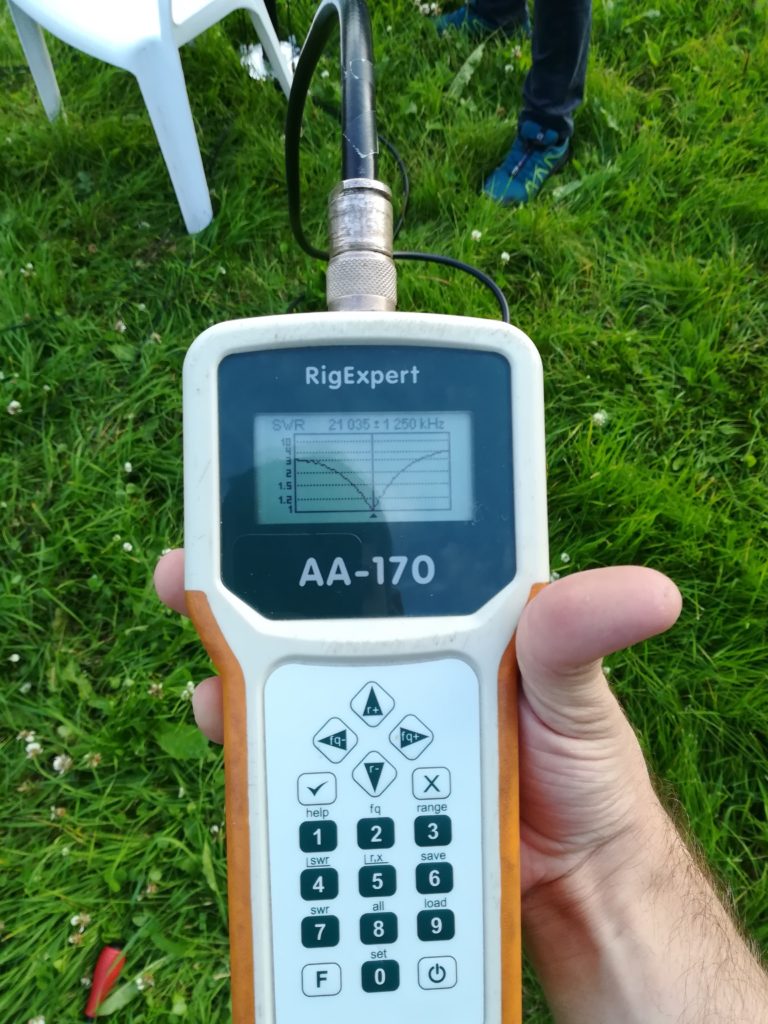In preparation for an IOTA trip to Tustna (EU-036), LB6RH bought a DX Commander antenna. The antenna is a lightweight, easy to build, vertical antenna that covers 6 m to 40 m (optionally 80 m in inverted L configuration). This post details our experience with building the antenna. A review of its air-worthiness will follow when we describe our IOTA experience.

A 9.6 m (or longer) telescopic fibreglass telescopic mast is the cornerstone of this antenna. The addition of metal and milled plastic parts help support the various antenna elements. All the antenna elements are essentially quarter-wave or five-eights-wave verticals over a radial ground plane. The verticals are coupled parallel into a central feedpoint.
This means that the antenna build consists mostly of cutting wires to the correct length, and then trimming the length afterwards to achieve best match. Additionally, some trickery needs to be employed to keep the elements snug.

Measuring elements and radials. 
Almost done cutting wire. 
Antenna wire is crimped and soldered to cable forks. 
Finally, all elements are marked for easy assembly (marking not inlcuded in kit).
Perhaps the most ingenious part of the design is the use of elastic shock cord to attach the antenna elements to the milled plastic pieces that go onto the telescopic pole. This keeps the wires straight, preventing entanglement with the other elements. Further, when two (or more) antenna elements are attached to the milled plastic pieces, the piece aligns itself with the help of the shock cord, neat!

As for assembly instructions, the antenna is on par with most amateur radio antennas. The broad scheme of things is present, but some details are omitted. Our major gripe was figuring out how the plastic carbines were supposed to attach to the elements, but with some trial and error we got through it. Overall the build is doable for most hams who have built a dipole (or some other simple antenna) and have some technical know-how.

Antenna put in position and plastic + metal parts attached. 
Closeup of plastic spacer shock cord to antenna wire arrangement. 
LB6RH threading the antenna wire through the plastic spacers. 
Hose clamps stops the telescopic pole from collapsing during long sessions.
The build is very solid, and we only found one design flaw and a minor gripe. In the current iteration of M0MCX’s design, a type of SO-239 connector with a nut that mounts to the metal feed bracket is employed. Unfortunately, this connector provides no surface to add counter torsion when tightening the nut, so ultimately the connector ends up not quite satisfyingly tightened. The end result is that the connector spins around when the user attempts to attach coax, which is annoying and might eventually lead to the feed wire coming loose.

As for the minor gripe, the metal parts comes with some burr from the tapping procedure. These are easily removed with a countersink tool, but we think it would add to the perceived quality of the kit if this was done at the factory stage.

Antenna erected. 
Most bands were perfectly matched (cut to suggested length), no trim needed.
All in all, the antenna is lightweight, solid, builds easily and covers the bands that it says that it covers. The small complaints we have are all circumvent-able by careful handling. Finally, it is very reasonably priced for what you get. We are all but ready to give it our seal of approval. However, we still need to test its credentials on the air. The IOTA contest should give us ample opportunity to do so, and we hope to be able to work you as LA1K/P from EU-036.


0 Comments
1 Pingback